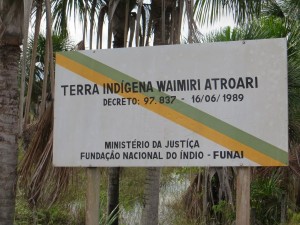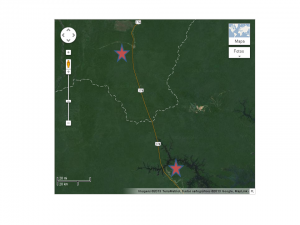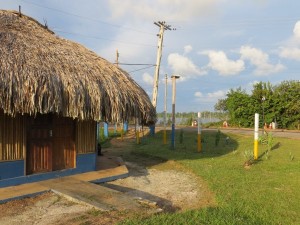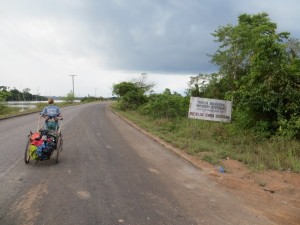We were told not to run through the reserve, that the Indigenous people of the Waimiri Atroari Indian Reserve were hostile towards ‘white people’. That they had attacked people in the Reserve with bows and arrows.
That they stole the passports and money of a party of people whom had walked into their forest and threw the “booty” into the river! That only their law exists in the Reserve.
One can understand. Thirty-six years ago the BR174 road – one of the Pan Amazonian tendrils planned to open the Amazon to resource extraction – was pushed through their homelands.
The army, government and their bulldozers would not heed the arrows of the desperate people whose home was being torn apart. Over 2000 indigenous people are believed to have died.
When you look at the satelite image of their Reserve below, it’s evident why they were so committed to stopping the road. Either side of their gates, the forest has gone, a herring bone of fields with charred tree stumps mark the passage of the road and the access for deforestation. Their Reserve remains as the only intact island of wonderful forest.
But it wasn’t just their fearsome reputation. Laws had also been set inplace to ‘protect’ them. Automated traffic is only allowed to pass through the Reserve in the hours of daylight (apart from public transport which can pass at other times). People are not allowed to pass in other modes of transport.
Undeterred, we were hopeful we could convince the Indians of our positive intentions and had hatched a plan we hoped they might consent to.
So we ran to the gates of the Rerserve bubbling with anticipation.
A car sat up to its waste in water in a laggon, its lights flashing. Had this been the Indians’ latest victims?

- Start of the Indigenous Reserve




Pingback:What a difference a day makes……! | 5000 Mile Project